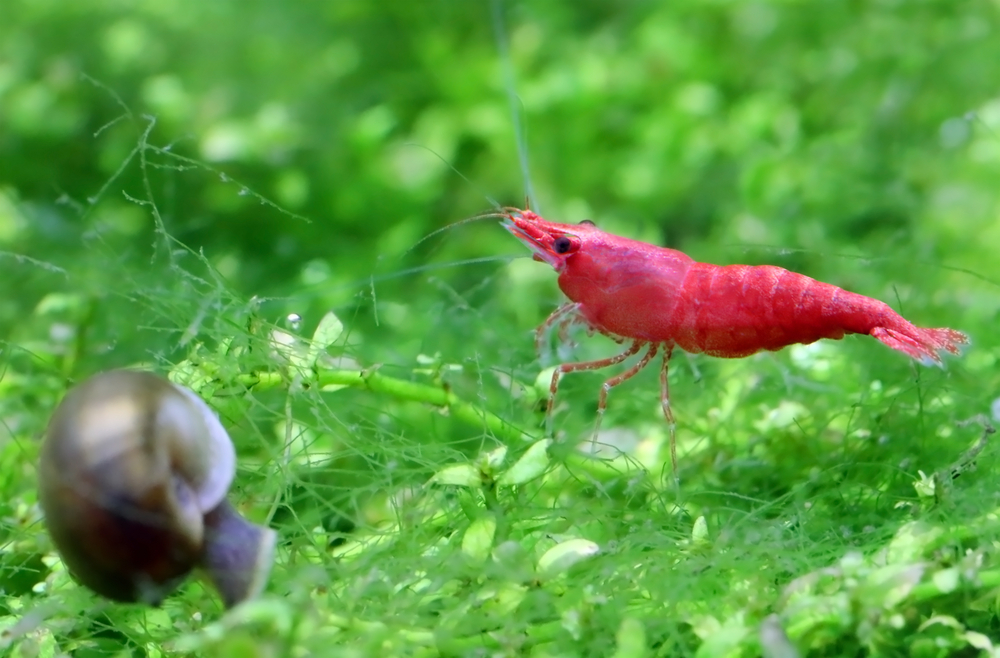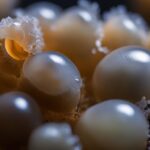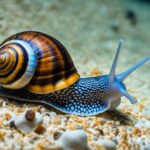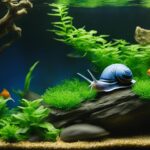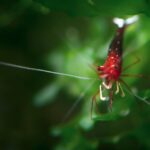When considering the addition of snails to a shrimp tank, there are some advantages and disadvantages that should be taken into account, we cover these in our Can snails and shrimp live together article.
On the one hand, snails can provide valuable scavenging services in a shrimp tank, eating up any leftover waste or deteriorating food from your substrate. This will help keep your water clean, making it healthier for both your shrimp and other tank inhabitants as well. Additionally, they can also provide aeration benefits as they naturally burrow through the substrate.
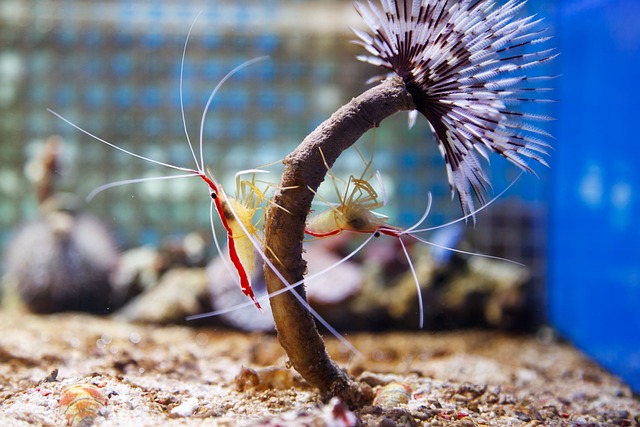
On the other hand, snails may compete with your shrimp for food due to their voracious appetites. If you have particularly small or young shrimp in the tank, this could pose a problem if there isn’t enough food to go around. In addition, certain snail species such as Pond Snails can reproduce rapidly and become an unwelcome pest if not kept in check. Therefore, careful consideration should be taken when deciding whether or not adding snails is right for you and your tank inhabitants.
Aquatic Snail Species
Snails are one of the most common aquatic creatures that can be found in freshwater environments. They come in a variety of sizes, shapes and colors, and many species live in ponds, rivers, lakes and creeks throughout the world. Freshwater snails are distinguished by their soft bodies with protective shells on the outside. The shells feature spiral whorls which can range from light shades of brown to vivid hues of green or yellow.
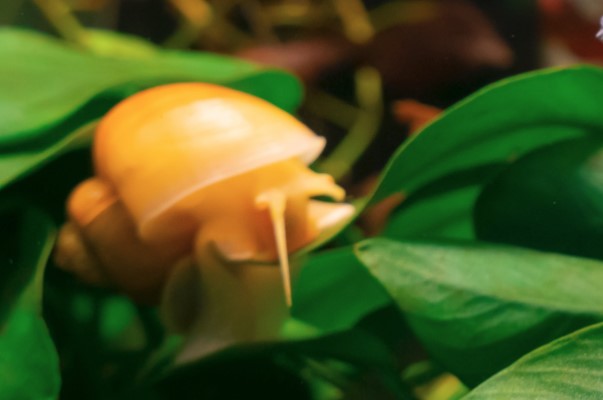
Some of the most common types of freshwater snails include pond snails, ramshorn snails,trapdoor snail, Malaysian trumpet snail and Apple snail. Pond snails have a long life span and grow up to 1-2 cm in size with oval-shaped shells. Ramshorn snails are identified by their twisty spiral shells that come in shades of dark brown or orange-red tones. Trapdoor snail have conical shells that stretch up to 3 inches in length and feature an operculum – a hard horny plate at the bottom which acts as a trap door for protection against predators. Malaysian trumpet snails usually have smooth conical shaped shells up to 1 inch long, whereas Apple snails have globular shape and reach between 2-6 inches when fully grown
Why pair snails and shrimp in the same tank
Snails are an essential part of a shrimp aquarium as they provide numerous benefits and can help maintain the biological balance within it. Snails are incredibly helpful when it comes to keeping a successful shrimp tank, as they eat any uneaten food or algae that would otherwise start to pollute and degrade the water quality. Additionally, because snails have hard shells, they act as natural filters by trapping debris from the substrate and helping to keep it clean. Furthermore, snails regulate the growth of detrimental bacteria and help in the digestion of plant matter which makes them great scavengers and contributors to waste management. All this will improve the health of your fish, shrimps and plants that share your aquarium with you.
If you are still struggling to find out why snails are beneficial for your shrimp tank then here is another plus point – most snail species reproduce rapidly meaning their presence would remain consistent over time should something disastrous happens like an unexpected power outage. Moreover, some snail species even devour pest insects like flatworms and planaria making them a natural method for pest control instead of resorting to harsh chemical treatments that could harm other inhabitants in your tank including shrimps!
Cleaning up the shrimp mess
The humble snail is the ideal aquarium clean up crew. While some may worry that they’ll take over the aquarium, in most cases this isn’t an issue. Since snails breed so rapidly, it could be due to food source being too abundant in the aquarium. Of course, if this is the case then you should ask yourself why there is such an abundance of food for them. In some situations it’s simply because people are overfeeding their fish, leading to extra food dropping onto the tank floor which provides a snack for snails and other scavengers alike.
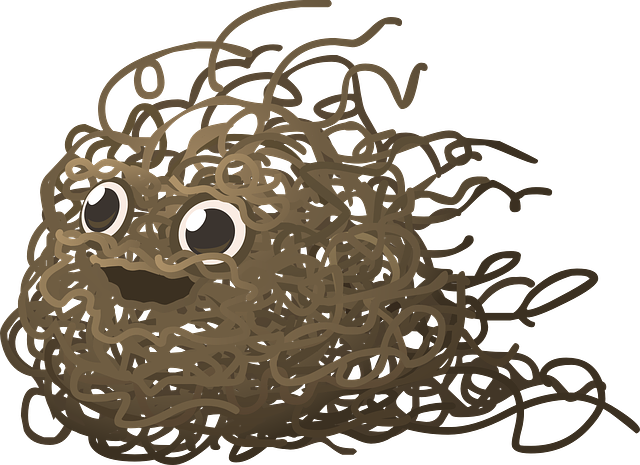
At these times, controlling the amounts of food you offer your pets can help keep your snail population under control while still providing them with enough sustenance to thrive and help you keep your tank clean (making sure all excess needs to be removed immediately). Snail waste also adds nutrients back into the water that aid in keeping algae growth down, making them a great double-edged sword in terms of aquarium husbandry — albeit a small one!
Algae Clean up
Algae eating snails are an amazingly efficient and cost-effective way to tackle algae problems in freshwater aquariums. Not only are these little guys small and unlikely to disrupt the tank’s delicate ecology, they also have a huge variety of colors and patterns that can give the aquarium a bit of visual interest even as they chow down on different types of algae. The most popular types of algae eating snails are Nerite Snails, which can consume all sorts of nasty filamentous algae, diatoms, green spot algae, blue-green cyanobacteria, and other slimy stuff you don’t want clogging your water supply. These types of snails are relatively low maintenance since they won’t reproduce in freshwater tanks and can usually eat more than enough algae to keep themselves fed.
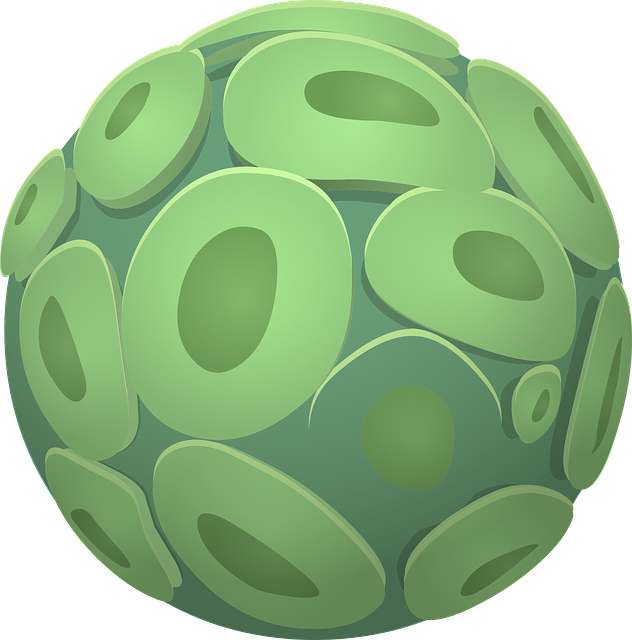
They do require calcium supplementation from time to time (or extra shell grit or cuttlebone) to make sure their shells stay healthy and strong though. Otherwise, all you need to do is feed them with tank-safe vegetables like cucumber slices for occasional supplemental nutrition. All in all, these amazing little creatures make excellent additions to any freshwater aquarium due to their hardworking nature when it comes to keeping the water clean from fuzzy scum.
Pros and Cons of Shrimp and Snails in the same tank
The idea of keeping shrimp and snails together in the same tank may seem daunting, but it’s actually quite straightforward when done correctly. For starters, both shrimp and snails are very peaceful animals who will not fight with each other – they only require plenty of open swimming space and a substrate that they can safely hide away in. Additionally, the presence of snails can be beneficial to shrimp as they provide essential benefits such as natural algae eating, waste reduction, and tank upkeep. This allows for a cleaner aquarium and happy thriving shrimp.
On the downside, however, if improperly cared for or handled too roughly, these animals can become stressed from competing for resources such as food or hiding spaces and ultimately cause harm to each other. Further care should be given to ensure proper water conditions since both animals have their own set of needs that should be taken into account before including them in the same tank.
In order to make things safe for them both, you will likely want to introduce them at different times to allow for easy acclimatization period between both species. All in all, with proper care and research you should have no problem successfully housing shrimp and snails together!
Shrimp and Snail Behaviour
The main concern when considering putting shrimp and snails together is compatibility. Although most aquatic snails won’t bother the freshwater shrimp, some kinds may be aggressive towards them or even eat them outright.
Therefore it’s important to do proper research on any particular species you’re interested in keeping before introducing them into the tank that already has “inhabitants” in it, or else you could end up with a tragedy on your hands! Alongside this, if you decide to stock your tank with a lot of live plants for a natural aesthetic, sharp-edged varieties may inadvertently hurt smaller creatures like shrimp so take precaution against this as well.
Can Snails Eat Shrimp?
Yes, some snails are quite fond of shrimp and will eat them whenever they have the chance. The most common type of snail that does so is the Mystery Snail. These snails have particularly strong instinct for food and anything that stays in one place too long becomes their target.
However, a better way to deal with this situation is to keep an eye out for sick or dead shrimps in the fish tank. If any are found, make sure that they are removed quickly because some snails will also feed on weakened or dying shrimps. This not only saves your shrimp, but it also prevents the spread of germs and other contaminants inside the tank as well as healthy shrimps live longer and happier lives!
In Conclusion – Can snails and shrimp live together?
Snails are popular and often seen additions to a fish tank. They serve a vital role in maintaining the balance of the aquarium ecosystem by feeding on algae and uneaten food particles, which reduces excess material buildup and water contamination. Snails can be active or sedentary depending on the species, with some preferring to explore the tank constantly while others tend to hide away more often. These critters are also effective scavengers as they search out any decaying material in tanks that act as an important source of nutrition for them.
Shrimp, too, provide great benefits to both freshwater and saltwater aquariums. As omnivores, they help keep an aquarium’s floors clean by consuming any algae growing there and search through crevices looking for small particles of food that were missed when it was fed.
They enjoy hiding amongst plants and rocks during their nocturnal dieting duties but will often emerge in daylight hours once all the predators have gone to rest – at which time consuming leftovers is then possible for them. Thanks to its eating habits, shrimp help reduce harmful bacteria growth helping maintain a balanced healthy environment inside the tank.
With many years of experience, I can advise that pairing the two is a great choice, but there are important factors to take into consideration. Such as what is the best type of snails for shrimp tanks. I have written many other articles covering these topics and can be found here.
Please reach out if you have any questions, I am more than happy to help.

